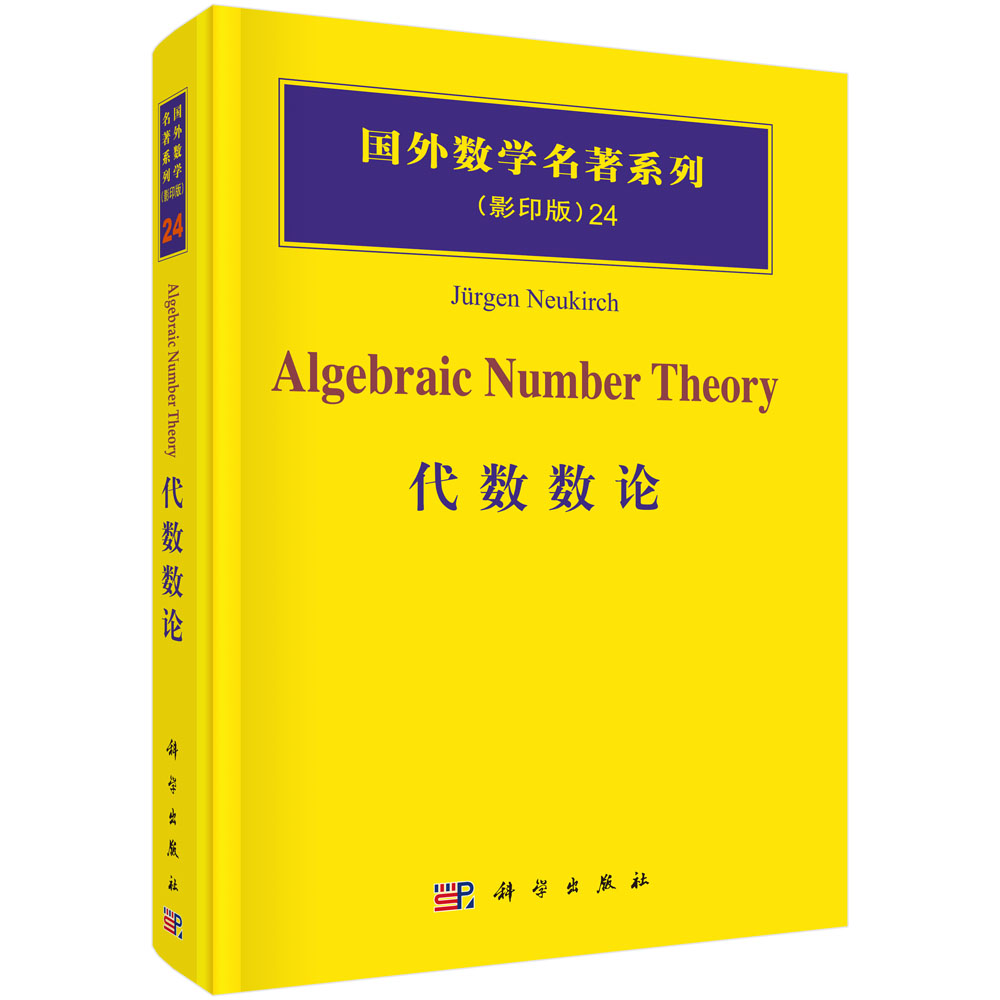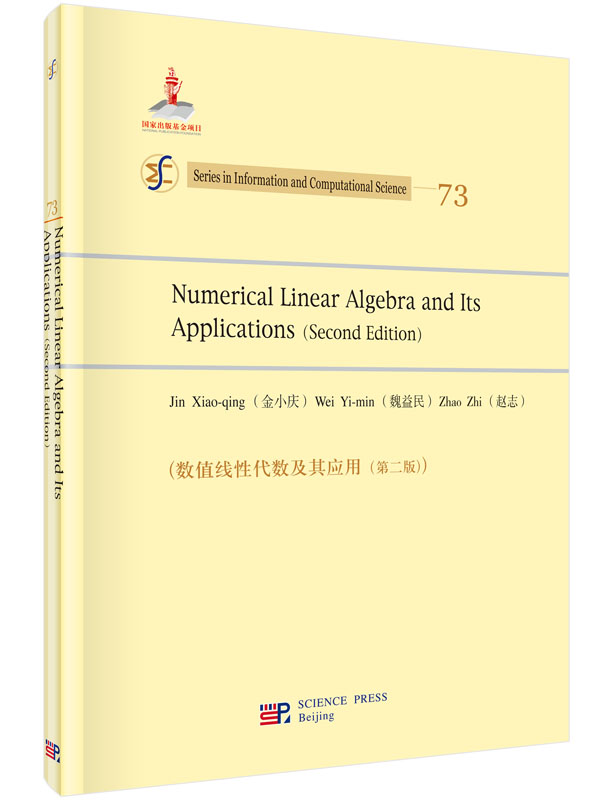目录
- Contents
Preface
Chapter 1 Introduction 1
1.1 Basic symbols1
1.2 Basic problems in NLA 2
1.3Whyshallwestudynumericalmethods? 3
1.4 Matrix factorizations (decompositions)4
1.5 Perturbation and error analysis 4
1.6Operationcostandconvergencerate 5
Exercises6
Chapter 2 Gaussian Elimination 9
2.1 Triangular linear systems and LU factorization9
2.1.1 Triangular linear systems9
2.1.2 Gaussian transform matrix 11
2.1.3 Computation of LU factorization 12
2.2 LU factorization with pivoting 15
2.3 Cholesky factorization 19
Exercises 21
Chapter 3 Perturbation and Error Analysis 23
3.1 Vector and matrix norms 23
3.1.1 Vector norms . 23
3.1.2 Matrix norms . 24
3.2 Perturbation analysis for linear systems30
3.3 Error analysis on .oating point arithmetic 34
3.4 Error analysis on partial pivoting38
Exercises43
Chapter 4 Least Squares Problems46
4.1 Least squares problems 46
4.2 Orthogonal transformations 51
4.2.1 Householder transformation 51
4.2.2 Givens rotation 53
4.3 QR decomposition 54
Exercises 57
Chapter 5 Classical Iterative Methods 60
5.1 Jacobi and Gauss-Seidel method 60
5.1.1 Jacobi method60
5.1.2 Gauss-Seidel method61
5.2 Convergence analysis 62
5.2.1 Convergence theorems62
5.2.2 Su.cient conditions for convergence63
5.3 Convergence rate68
5.4 SOR method69
5.4.1 Iterative form70
5.4.2 Convergence criteria70
5.4.3 Optimal ω in SOR iteration72
Exercises74
Chapter 6 Krylov Subspace Methods76
6.1 Steepest descent method76
6.2 Conjugate gradient method80
6.2.1 Conjugate gradient method80
6.2.2 Basic properties82
6.3 Practical CG method and convergence analysis84
6.3.1 Practical CG method85
6.3.2 Convergence analysis86
6.4 Preconditioning 90
6.5 GMRES method94
6.5.1 Basic properties of GMRES method 94
6.5.2 Implementation of GMRES method 98
Exercises101
Chapter 7 Nonsymmetric Eigenvalue Problems 103
7.1 Basicproperties103
7.2 Power method105
7.3Inversepowermethod 108
7.4 QR method109
7.5 Real version of QR algorithm. 112
7.5.1UpperHessenbergreduction 112
7.5.2 QR iteration with single shift 117
7.5.3 QR iteration with double shift 118
Exercises119
Chapter 8 Symmetric Eigenvalue Problems121
8.1Basicspectralproperties 121
8.2 Symmetric QR method 123
8.2.1 Tridiagonal QR iteration124
8.2.2 Implicit symmetric QR iteration126
8.2.3 Implicit symmetric QR algorithm 127
8.3 Jacobi method128
8.3.1 Basic idea 128
8.3.2 Classical Jacobi method131
8.3.3 Parallel Jacobi method 132
8.4 Bisection method 133
8.5 Divide-and-conquer method135
8.5.1 Tearing136
8.5.2 Combining 137
Exercises142
Chapter 9 Applications in ODEs and DDEs144
9.1 Introduction144
9.2 Background of BVMs 145
9.2.1Linearmultistepformulas 145
9.2.2 Block-BVMs and their matrix forms 148
9.3 Strang-type preconditioner for ODEs 150
9.3.1 Construction of preconditioner 150
9.3.2Convergencerateandoperationcost153
9.3.3 Numerical result154
9.4 Strang-type preconditioner for DDEs 155
9.4.1Di.erentialequationswithmulti-delays156
9.4.2 Construction of preconditioner 157
9.4.3 Convergence rate159
9.4.4 Numerical result 160
9.5 Strang-type preconditioner for NDDEs161
9.5.1 Neutral delay di.erential equations161
9.5.2 Construction of preconditioner 162
9.5.3 Convergence rate164
9.5.4 Numerical result165
9.6 Strang-type preconditioner for SPDDEs166
9.6.1Singularperturbationdelaydi.erentialequations 166
9.6.2 Construction of preconditioner 167
9.6.3 Numerical result168
Chapter 10 Applications in FDEs170
10.1 Introduction170
10.2 The CN-WSGD scheme172
10.2.1 Disretization of FDEs 172
10.2.2 Matrix form of the CN-WSGD scheme174
10.3 Sparse banded preconditioner for FDEs175
10.3.1 Construction of preconditioner175
10.3.2PreconditionedGMRES(ρ)method 177
10.3.3 Numerical result179
Bibliography181
Index187




















